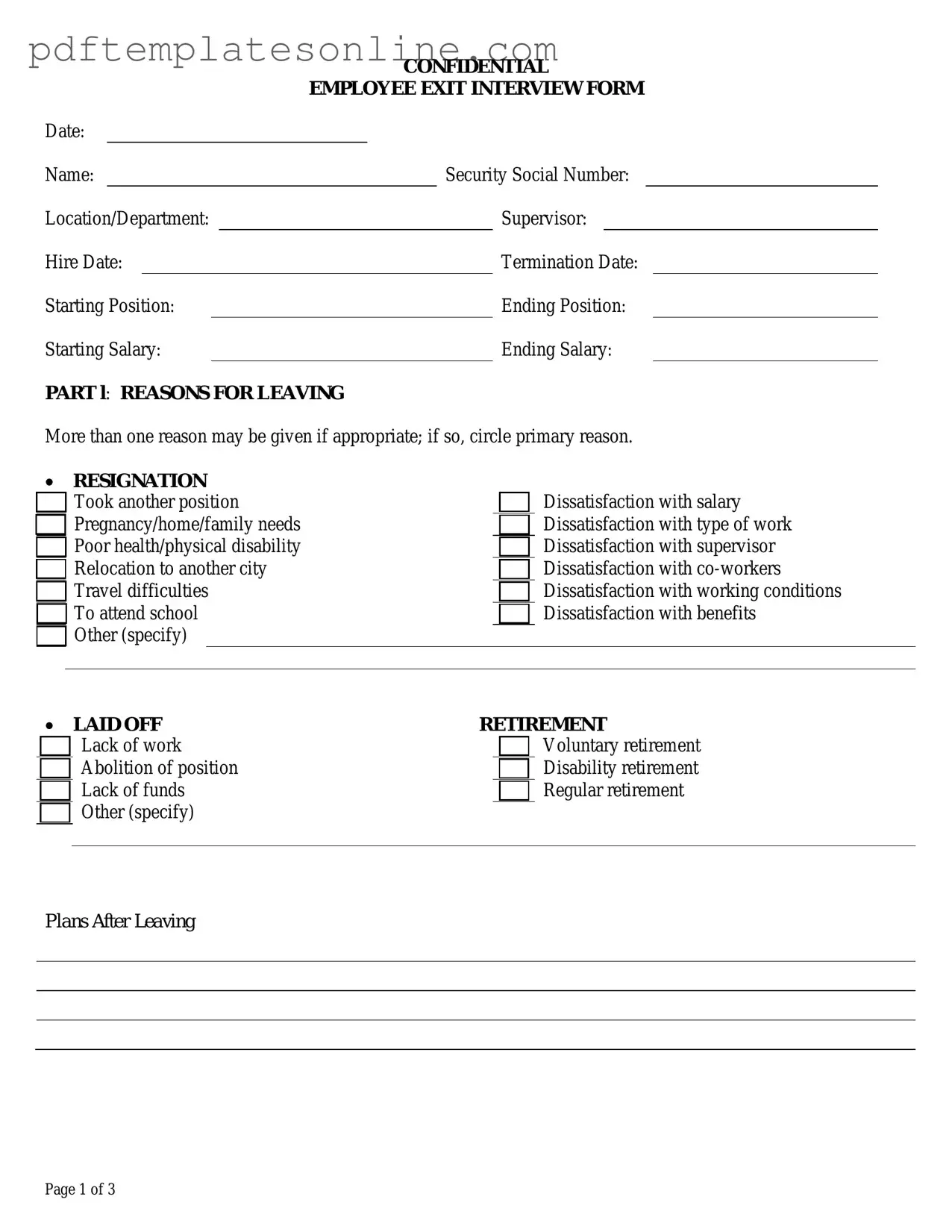When employees leave a company, exit interviews serve as a valuable opportunity for feedback. However, many individuals make common mistakes when filling out the exit interview form, which can hinder the process. Understanding these pitfalls can help ensure that the feedback provided is both constructive and useful.
One frequent mistake is providing vague answers. When respondents fail to elaborate on their experiences, it leaves management with little to work with. Specific examples and detailed explanations are crucial for understanding the reasons behind an employee's departure. Without this clarity, the organization may miss the opportunity to address underlying issues.
Another common error is focusing solely on negatives. While it’s important to express dissatisfaction, an exit interview should also highlight positive experiences. This balanced perspective can help the company recognize what they are doing well and what aspects need improvement. Ignoring the positives can create an unbalanced view that may not reflect the overall employee experience.
Some individuals also forget to proofread their responses. Spelling and grammatical errors can detract from the professionalism of the feedback. Taking a moment to review the form can enhance clarity and ensure that the message is conveyed effectively. A well-written response reflects a thoughtful approach and increases the likelihood that management will take the feedback seriously.
Additionally, not being honest can undermine the purpose of the exit interview. Employees may feel tempted to sugarcoat their experiences or avoid confrontation. However, honesty is crucial for fostering a culture of improvement. If employees hold back on their true feelings, the organization may continue to repeat the same mistakes.
Another mistake is not providing actionable suggestions. Simply pointing out problems without offering solutions can leave management at a loss. Employees should feel empowered to suggest changes that could enhance the work environment. Constructive feedback, paired with potential solutions, can lead to meaningful improvements.
Some people also neglect to consider confidentiality. While exit interviews are generally confidential, it’s wise to be cautious about sharing sensitive information. Employees should focus on their own experiences rather than airing grievances about colleagues. Respecting privacy can help maintain a positive atmosphere during the transition.
Furthermore, missing the opportunity to ask questions can be a significant oversight. Exit interviews are not just about providing feedback; they also offer a chance for employees to gain insights into company policies or future changes. Engaging in a two-way dialogue can enrich the experience for both parties.
Lastly, some individuals fail to follow up after submitting their exit interview form. If there are critical issues that require further discussion, reaching out to HR or management can be beneficial. A follow-up can provide clarity and reinforce the importance of the feedback shared.
By being aware of these common mistakes, employees can make the most of their exit interviews. Thoughtful and constructive feedback can lead to positive changes within the organization, benefiting both current and future employees.
